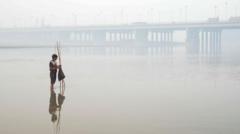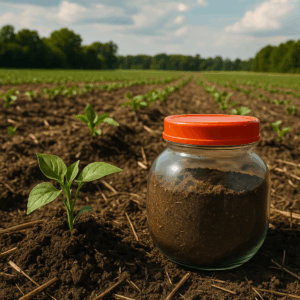Lahore is grappling with severe air pollution as smog levels reach alarming heights, impacting health and daily life. Health experts warn of worsening conditions as authorities scramble to enact emergency measures, while cross-border pollution from India complicates the issue.**
Lahore Suffers from Record Smog Crisis as Air Quality Hits Dangerous Levels**

Lahore Suffers from Record Smog Crisis as Air Quality Hits Dangerous Levels**
A toxic haze envelops Lahore, causing widespread health concerns and prompting emergency measures amid an unprecedented pollution crisis.**
A thick layer of smog has descended upon Lahore, Pakistan, plunging the city of 13 million into a health crisis the likes of which it has never seen. Residents, already familiar with seasonal smog, have been choking under the intensity for over a week, as the Air Quality Index (AQI) continuously exceeds 1,000—markedly higher than the hazardous level of 300.
As temperatures drop, the stench of burning persists, with thick smoke obscuring the skyline and creating an oppressive haze. Those without masks face immediate irritation, with many suffering from severe coughing and respiratory distress. Local hospitals brace for an influx of patients; reports indicate that nearly 900 individuals have been admitted with breathing problems.
In response to the crisis, authorities have enacted a "green lockdown." This includes closing schools, restricting vehicular traffic in hotspot areas, and shutting parks and markets earlier in the evening. A Lahore High Court order mandates the closure of all markets by 8 p.m., with complete halts on Sundays.
NASA satellite images reveal the smog's extensive reach, coupled with ongoing fires attributed to farmers in both Pakistan and India burning stubble after harvest. This year, estimates suggest record-setting fires; NASA predicts between 15,500 and 18,500 fires will be counted, primarily affecting air quality. Pakistani officials claim that around 30% of the toxic haze can be traced back to stubble burning across the border, where the Indian government has taken steps to combat the practice.
However, many sources of Lahore’s pollution stem from within the city: millions of vehicles, particularly motorbikes and heavy industries like coal-fired brick kilns contribute significantly to the air quality issues. Experts emphasize that with winter approaching, flaring temperatures will only worsen the situation. Abid Omar, founder of Pakistan’s Air Quality Initiative, reports alarming AQI readings, with some areas registering above 1,900—well beyond safe limits.
Health experts express grave concerns, particularly for vulnerable groups including children and the elderly. “The pollution levels are significantly elevated, and it’s expected to worsen," cautioned pulmonologist Dr. Irfan Malik. Many parents, like Sadia Kashif, lament the impact on their children, wishing for cleaner air for outdoor play rather than the current struggle against airborne toxins.
Government officials admit that while emergency measures may provide temporary relief, sustainable solutions like improved public transportation will take longer to materialize. Punjab Chief Minister Maryam Nawaz has proposed climate diplomacy with her Indian counterpart, acknowledging the transnational nature of the pollution problem.
Experts like Omar argue that both governments must undertake decisive actions rather than relying on short-term fixes. Reflecting on the urgent need for systemic change, he says, “Blue skies are an indicator of good governance,” emphasizing that the ongoing air crisis underlines a broader environmental dilemma that requires immediate attention from both nations.





















